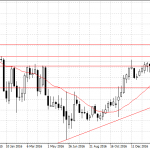One of the earliest articles I wrote was “A Loaf Of Bread, A Gallon Of Gas, An Ounce Of Gold”. The information contained in the article is basic to a fundamental and accurate understanding of gold.
The convolution and complication of basic fundamentals reigns supreme in almost all analysis of gold. That is unfortunate, because it obscures the simple truth.
The simple truth is that gold is real money. Even that simple truth, however, deserves some further explanation.
We know that there are certain attributes, or characteristics, of money. The two that are more commonly cited are 1) a medium of exchange and 2) a measure of value. But what is required of something in order for it to deserve the moniker of ‘real’ money?
In order for anything to be termed real money, it must be something else in addition to the above mentioned medium of exchange and measure of value.
That something else is a store of value: “A store of value is an asset that maintains its value without depreciating”…Investopedia
The best and most relevant example to illustrate gold’s role as a store of value is as follows:
The Federal Reserve Bank of the United States was established in 1913. At that time the U.S. dollar was fully convertible into gold at a rate of twenty ($20.67) dollars to the ounce. You could exchange paper currency of twenty dollars for one ounce of gold in coin form. The coins were minted by the U.S. government.
Fast forward one hundred years. The U.S. dollar has lost 98% of its purchasing power over the past century. In other words, it takes more than fifty times as many dollars to buy today what one dollar would buy a hundred years ago. Whereas one ounce of gold will still buy today what it would a hundred years ago.
Only if something meets the requirements of all three specific things – medium of exchange, measure of value, store of value – can it be real money. Anything can be real money if it meets these three requirements, however, throughout all of recorded history, only gold has passed the test.









Leave A Comment